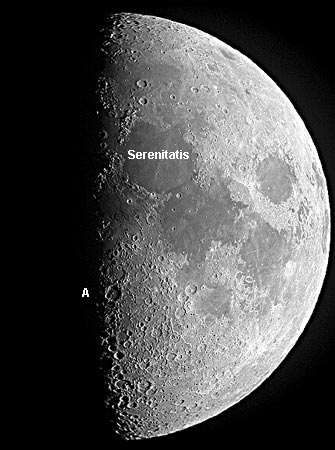Difference between revisions of "January 1, 2004"
| Line 14: | Line 14: | ||
</tr> | </tr> | ||
</table> | </table> | ||
| − | + | <table class="story" border="0" bgcolor="#FFFFFF" width="90%" cellpadding="10" align="center"> | |
<tr> | <tr> | ||
<td valign="top"> | <td valign="top"> | ||
| Line 38: | Line 38: | ||
</p> | </p> | ||
<p align="center" class="main_titles"><b>Author & Editor:</b><br> | <p align="center" class="main_titles"><b>Author & Editor:</b><br> | ||
| − | [mailto: | + | [mailto:tychocrater@yahoo.com Charles A. Wood]</p> |
<p align="center" class="main_titles"><b>Technical Consultant:</b><br> | <p align="center" class="main_titles"><b>Technical Consultant:</b><br> | ||
[mailto:anthony@perseus.gr Anthony Ayiomamitis]</p> | [mailto:anthony@perseus.gr Anthony Ayiomamitis]</p> | ||
| − | |||
<p align="center" class="main_titles"><b>A service of:</b><br> | <p align="center" class="main_titles"><b>A service of:</b><br> | ||
[http://www.observingthesky.org/ ObservingTheSky.Org]</p> | [http://www.observingthesky.org/ ObservingTheSky.Org]</p> | ||
Revision as of 17:42, 4 January 2015
First Quarter Moon
|
|
|
First Quarter Moon A great time to begin observing the Moon is near first quarter, when the terminator - the sunrise line - slices right thru the middle of the Moon. This Moon image, taken with a 14" SCT and a Nikon Coolpix digital camera, shows the dark circular maria - vast piles of lava - on the eastern (right) hemisphere of the Moon. Along the terminator, craters and mountains cast dramatic shadows, making features fascinating to observe. This image has about the same lighting conditions as Galileo's drawing - upper left masthead - from 1609. On both the drawing and the modern image you can see Mare Serenitatis just east of the terminator, and two mountain ranges crossing it. Galileo's very prominent crater further south on the terminator is clearly exaggerated in size, but can't be identified with certainty; could it be Albategnius (labeled A)? Related Links:
Tomorrow's LPOD: Cauchy Faults, Rilles and Domes |
Author & Editor:
Charles A. Wood
Technical Consultant:
Anthony Ayiomamitis
A service of:
ObservingTheSky.Org
Visit these other PODs:
Astronomy | Mars | Earth
COMMENTS?
Click on this icon File:PostIcon.jpg at the upper right to post a comment.




